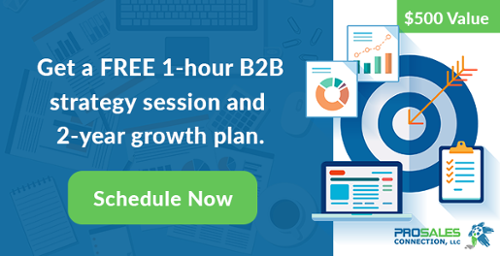There are four distinct phases that an entrepreneur will go through: launch, expand, optimize, and scale. While the time frame for each phase is different for many entrepreneurs, the objective is to get through these phases as quickly as possible to have a scalable business.
The Emotional Journey of a Startup Founder
The life of an entrepreneur is full of ups and downs. Whether you are about to embark on the entrepreneur’s journey, you are experiencing this journey in living color, or you are a seasoned business leader with the scars to prove it, recognizing where you are on this path can help to mitigate some of the lows. We hope this summary of the startup journey is helpful.
It is important to understand that the Y-axis represents the emotional state of the entrepreneur, not revenue. So if you find yourself in the pit of despair, your revenue might not have dipped to such an extreme low, but your confidence might have.
As entrepreneurs travel through these phases, this is the typical emotional journey. Some lucky few manage to avoid dipping into the pit of despair, often due to extreme business savvy or past experience with startups. But for many, the pit of despair looms just across the horizon.
Before the fall comes the climb. The first step of this startup curve is the launch phase -- that exciting time when you set out to break new ground.
LAUNCH
For some businesses, the launch phase takes six weeks. Sometimes it takes years. The complexity of your product and industry, coupled with how aggressive you are with your growth strategies, determines how quickly you ramp up.
This is the phase of the minimal viable product (MVP). Guesswork is inevitable with any startup, and the MVP allows you to test ideas, study consumer reaction, and perfect your product. As you go through several iterations of MVPs, the guesswork becomes surework.
In launch, you build a small team that can build the product and deliver it. You start to understand who is in your market. Past business connections and warm referrals will get you a few sales. You reach a point that you are confident that you have a product worth buying and you understand your market and begin to sell to it.
You lean back in your chair for a moment -- but only for a moment, because it’s time to expand.
EXPAND
Your core staff has you convinced that success is imminent and it is time to expand your team. Your hiring is not focused on operational or development people. It is focused on sales and marketing in an effort to reach more customers.
You start hiring people that specialize in growth. These hires will often be one of your connections -- a seasoned professional that is from your past, someone you’ve worked with before, or someone from a competitor that you are trying to take market share from. That person is almost always successful. Their expertise allows them to conquer the bountiful land of new opportunities that you have placed before them, and your revenue and confidence increases at every turn.
You become less and less involved with each sales transaction. You have earned another moment to lean back in your chair, but when you do, you see stormy clouds on the horizon. Your sales leader walks into your office and gives you a sobering forecast that strips you of your confidence.
Pit of Despair
Your revenue is still good, but the number and size of future deals is starting to diminish. Everything looks fine short-term, but you can see empty space when you look down your pipeline. Your sales team is wrapped up closing deals, so they don’t have time to fill the top of the funnel.
Sales appointments are becoming a scarcity. You have a panicked revelation that your pipeline has become unpredictable. But you still have some hope. The answer seems obvious to you. You just need to get your team to spend more time prospecting.
Sometimes you have a superstar that is up to the challenge and can balance closing deals while prospecting and nurturing cold prospects with expertise and consistency. If this is the case, you have more than a superstar, you have a unicorn.
But most entrepreneurs experience pushback from their team.
“We need to invest in marketing,” you’re told.
“I haven’t made a cold call in fifteen years.”
“Cold calls don’t work.”
Your team has been great to get you this far, but now you see that there is something missing. Warm contacts and referrals have supplied your growth targets, but now it is time to venture into the icy territories of cold prospects.
You feel the need to make a decision and to make it fast.
Your pipeline is dwindling along with your warm feelings.
The pit of despair is calling for you.
You’re lost and scared, tied to an expensive sales resource that isn’t producing new opportunities at the rate that you need. But invertebrates don’t usually become entrepreneurs. You’re up for the challenge. You have what it takes to succeed. You just need to optimize.
OPTIMIZE
To pull yourself out of the pit of despair, you have to take action. You need to build confidence by investing in new strategies. This is sales development, lead generation, demand generation, etc. While these might be processes that you’ve been using, usually it is at this point that entrepreneurs make these processes a priority.
Determining how to allocate resources to the most effective strategies is a period of trial and error that can have you feeling great one day and remind you of that pit of despair the next. It’s important at this point to invest in multiple strategies rather than going all in on one. The best businesses are built on strategic bets and playing the odds, not by putting it all on black.
You are committed to building a process that will provide perpetual growth. As you figure out what works, you scale it up. Ultimately, your process serves up deals to your sales team so that they can focus and even develop further expertise on closing sales. You’ve added the support beams necessary to stabilize your pipeline.
You reach the sweet spot of confidence where you know the ROI you can expect for each dollar you invest. Go ahead, lean back in your chair. The pit of despair is behind you, and you’ve earned it. Now it’s just time to scale.
SCALE
You know your customers. You know how to reach them. You know how to nurture them all the way from cold prospects to customers. If you built a truly great process in the optimize phase, you can scale up the inputs and see the same scale in your outputs. This is where the biggest and most successful businesses are -- the ones that can go out and look for investors to fuel their engine. The work never ends, but at least it’s sunny outside.
AN ALTERNATIVE PATH?
So how do you avoid reaching the deepest depths of the pit of despair? The most common solution is to be proactive. By reading this, you’ve already given yourself an advantage. Knowing what looms ahead can help you prepare for it. The moment that you start seeing the dip in the forecast, you’ll know it is time to look for lead generation and sales development strategies.
But getting ahead of the problem has its own challenges. Do you hire internally? Do you outsource sales? Do you need a bigger marketing team? Or should you outsource marketing? Or should you outsource sales AND marketing?
This can feel like constantly rotating a jigsaw piece to try to fit the puzzle. It’s a simple fact that the life of an entrepreneur is filled with such questions. The difference between making the right and wrong decision is often whether or not you sought the advice of someone experienced in the subject.
We might be that person that you need to talk to. With over ten years of experience in B2B appointment setting, our team at ProSales Connection knows how hard it is to build a sales and marketing process that delivers a consistent sales pipeline for your B2B company. Our professionally trained Sales Development Representative (SDR) team makes over 200,000 cold calls each year and has set thousands of qualified sales appointments.
As a B2B marketing and outbound sales agency, we have a strategy for each phase of the startup journey. Whether you need leads, need to qualify leads that you have already developed, or have a list of prospects that needs to be called, ProSales Connection can help. And since we understand the emotional ups and downs of the entrepreneur’s journey, we’ve decided to eliminate risk. We deliver qualified sales meetings through both digital outreach and outbound calling. Month-to-month programs. 30-day money-back guarantee.
We always start with a phone call to determine if we’d be a good fit for each other. So if you have fifteen minutes and want to redesign your emotional rollercoaster to be more pleasant, give us a call. We want to help you figure out where you are and how to grow as consistently as possible.
.jpg)







